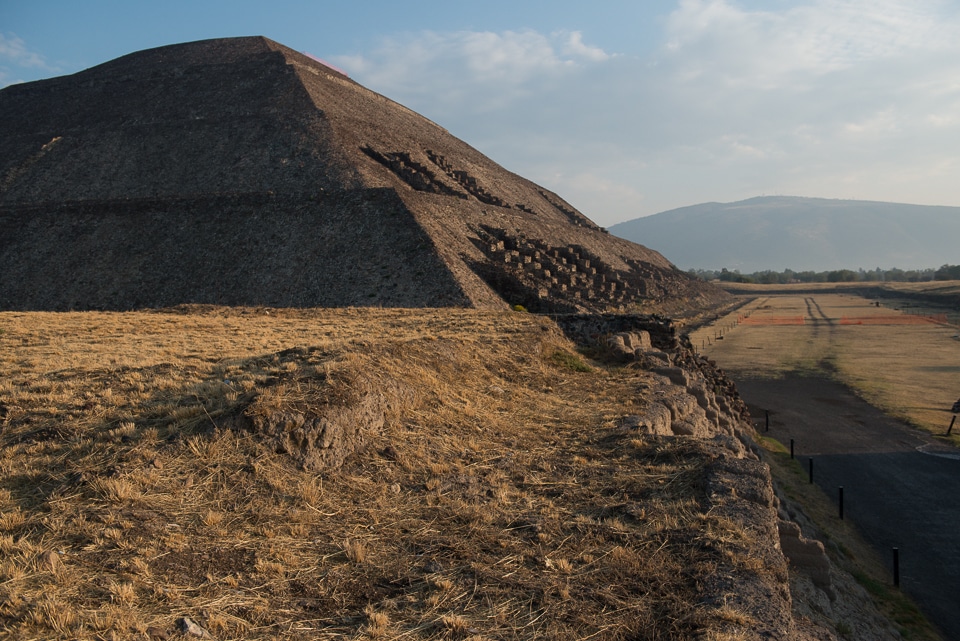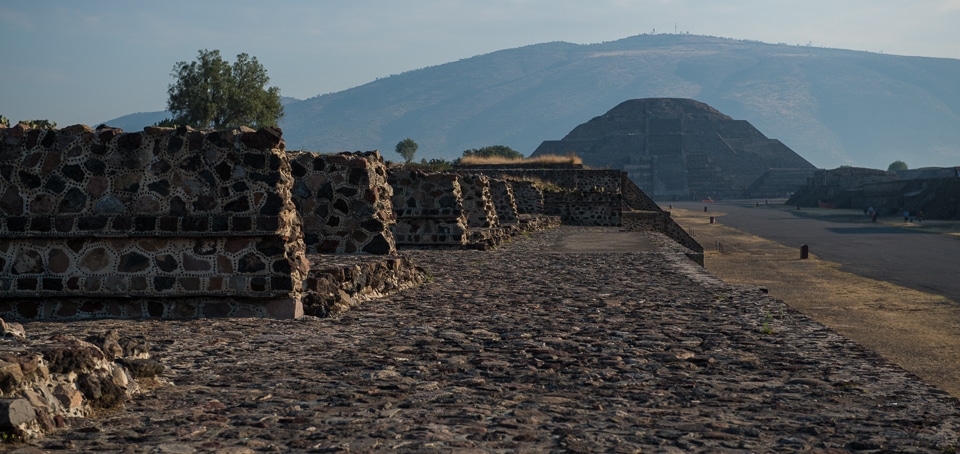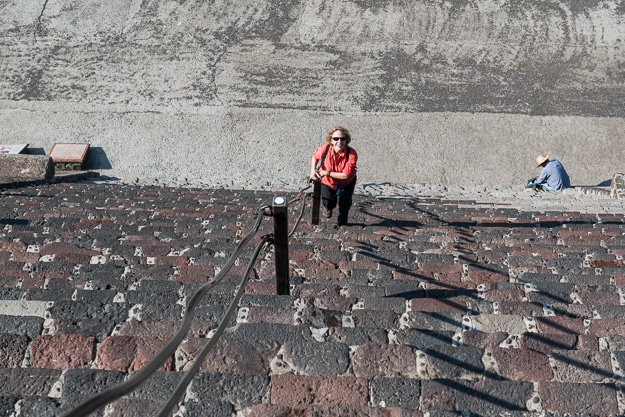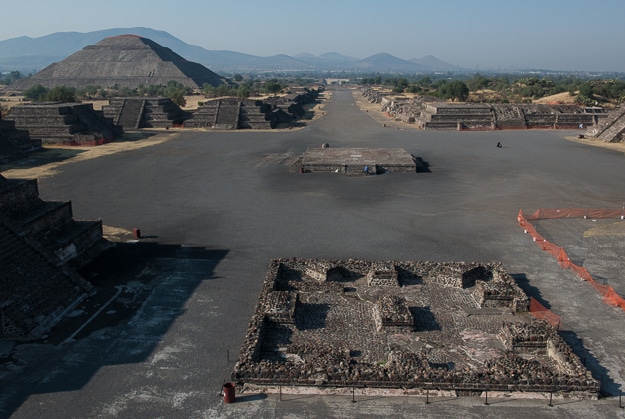
There’s no rush to get to the entrance of the archeological park of Teotihuacán. The sign says it opens at 7, which is when I arrived, but the guard won't let me in because the ticket collector hasn't shown up for work yet. As I stare at the sign about the opening hours, I notice there’s a suggestion box on a pole right next to it. Of course, the box which is supposed to contain the forms to submit suggestions is empty.
So much for photos of the pyramids in the dawn light.
At about 7:25 the rosy-fingered dawn is illuminating the clouds to the east, but even though I’m finally taking a short cut through the back side of the site, I’m still a good fast 15-minute walk from the lighted side of the Pyramid of the Sun. There are only three other people in the park other than me, so it would be easy to set up and get the shot I’d like…if only I’d got there half an hour earlier.

Oh, and I should mention, they don’t allow tripods anywhere on the site either. If I’d known that, I could have saved myself carrying my heavy camera case backpack with all my accessories all over the place, too.
Oh well.
Next time, I’m going to contact the site authority in advance and ask for permission to get in early to get pics, and to use a tripod. I figure if I ask now, it might get approved sometime in 2015.
Nevertheless, the Teotihuacán area is impressive, and is so big you need to set aside at least four hours to cover it. It’s extremely well preserved, especially when you consider that the two larger Pyramids of the Sun and the Moon are 2000 years old.

While I was sitting atop the Pyramid of the Moon (well halfway up, which is as far as they’ll let you go) I could watch Mexican masons chipping out what was probably original mortar from between the stones of an adjacent structure and replacing it with modern stuff. It’s obvious this has been done all over the site, and it has certainly been instrumental in the preservation.
As I said, I took a back way through the park in my futile rush to get to the Pyramid of the Sun, and so sort of skipped one of the later pyramids–the so-called Temple of the Plumed Serpent. That’s not such a tragedy though, as a portion of that temple had been removed to the Archeology Museum in Mexico City and can be seen there in better preserved condition anyway.
But more impressive than the sheer size of the two larger Pyramids of the Sun and Moon are the vistas they present in the context of the mile-long Avenue of the Dead. The avenue is one long precession of smaller tombs whose architecture is the repetitive smaller siblings of the immense pyramids which flank and cap the end of the broad promenade.
You can climb all the way to the top of the larger Pyramid of the Sun, a pleasure which I will reserve for another day…perhaps that day when I get there before dawn with my tripod.
But, the view from halfway up the Pyramid of the Moon (the climb I did make) at the end of the long avenue is the one that gives you pause. It is indeed a view to spur contemplation of what sort of advanced and creative society built such a city so long ago.

You can help yourself get ready for your own travels by reading our Get Started Planning Your Trip Now page.
We love traveling–with the right gear. We've gathered a lot of the stuff we use to make travel more pleasant and efficient all on one page. Shop our Travel Past 50 Amazon page to find our favorite gear. If you purchase something from the store, Travel Past 50, as an Amazon affiliate, may receive a small commission at no extra charge to you. Thanks.
We never leave home without our travel insurance. Nor should you. Search for the travel insurance from Allianz that best meets your needs, whether it be an annual plan or a single trip.
Note: This post and other posts on TravelPast50.com may contain paid or affiliate advertising links.
Up Your Travel Skills
Looking to book your next trip? Use these resources that are tried and tested by us. First, to get our best travel tips, sign up for our email newsletter. Then, be sure to start your reading with our Resources Page where we highlight all the great travel companies and products that we trust. Travel Accessories: Check out our list of all the accessories we carry to make getting there and being there a lot easier. Credit Cards: See our detailed post on how to choose the right travel rewards credit card for you. Flights: Start finding the very best flight deals by subscribing to Thrifty Traveler. Book your Hotel: Find the best prices on hotels with Booking.com. See all of the gear and books we like in one place on our Amazon shop.Got a comment on this post? Join the conversation on Facebook, Instagram, or Threads and share your thoughts!


Comments are closed.